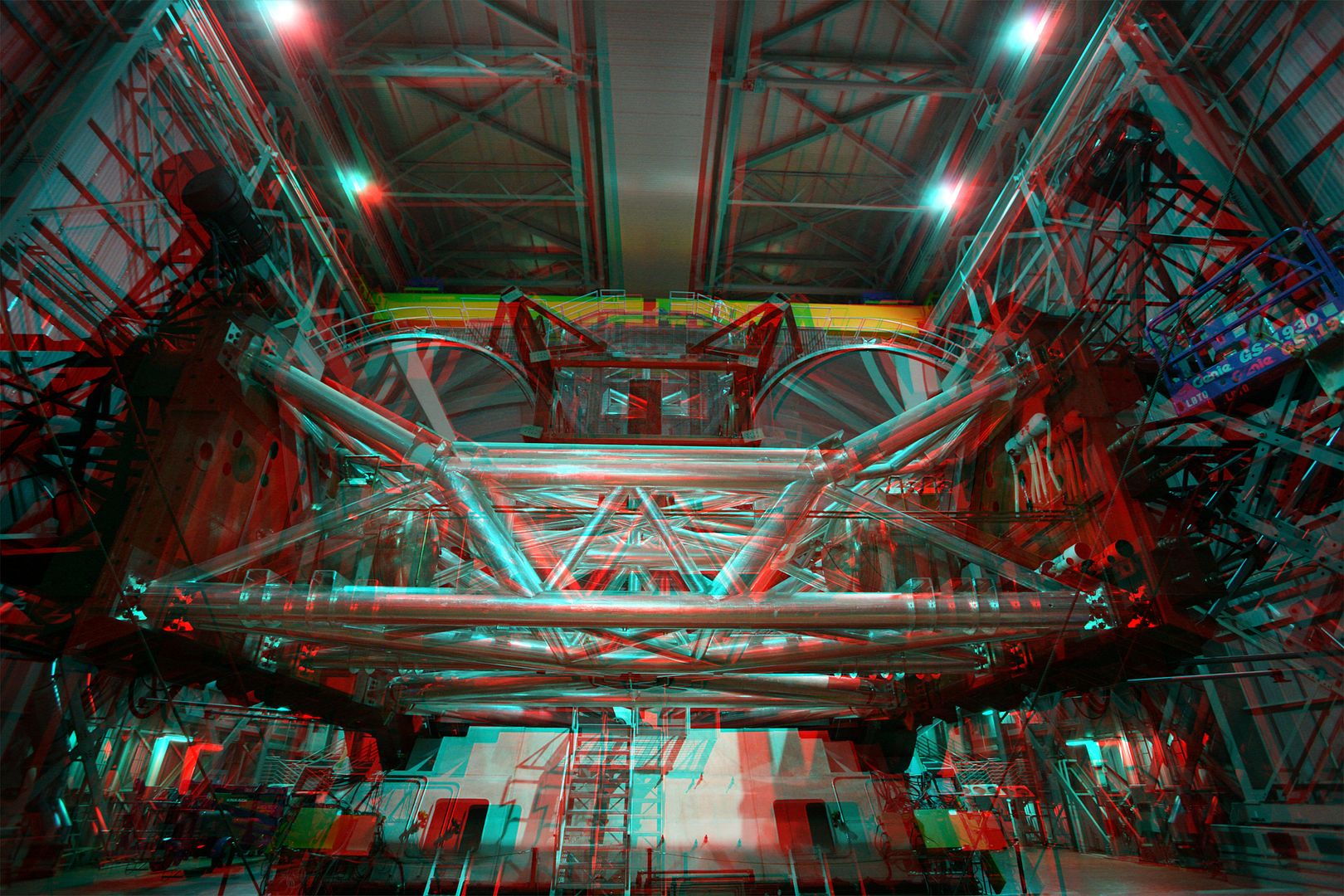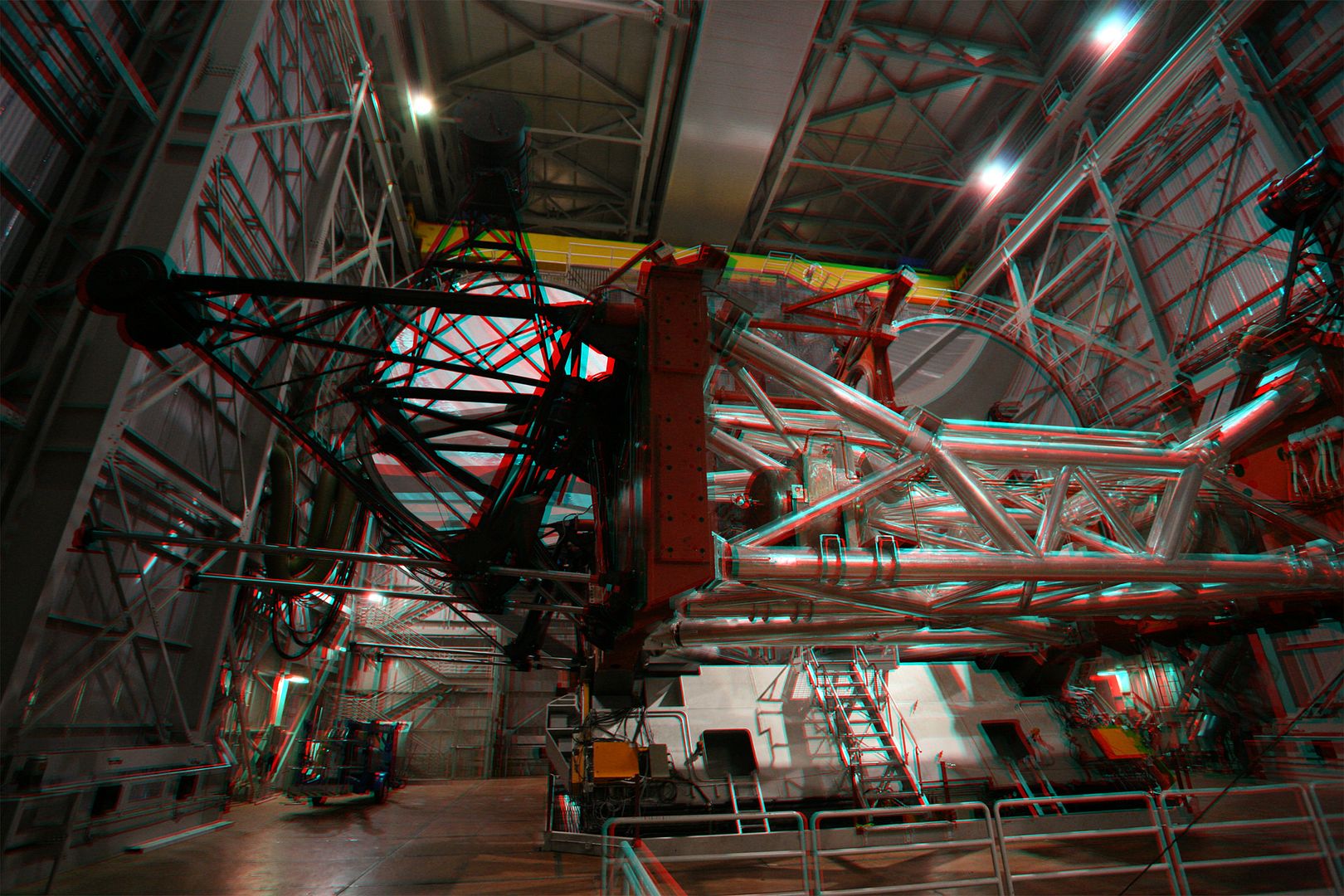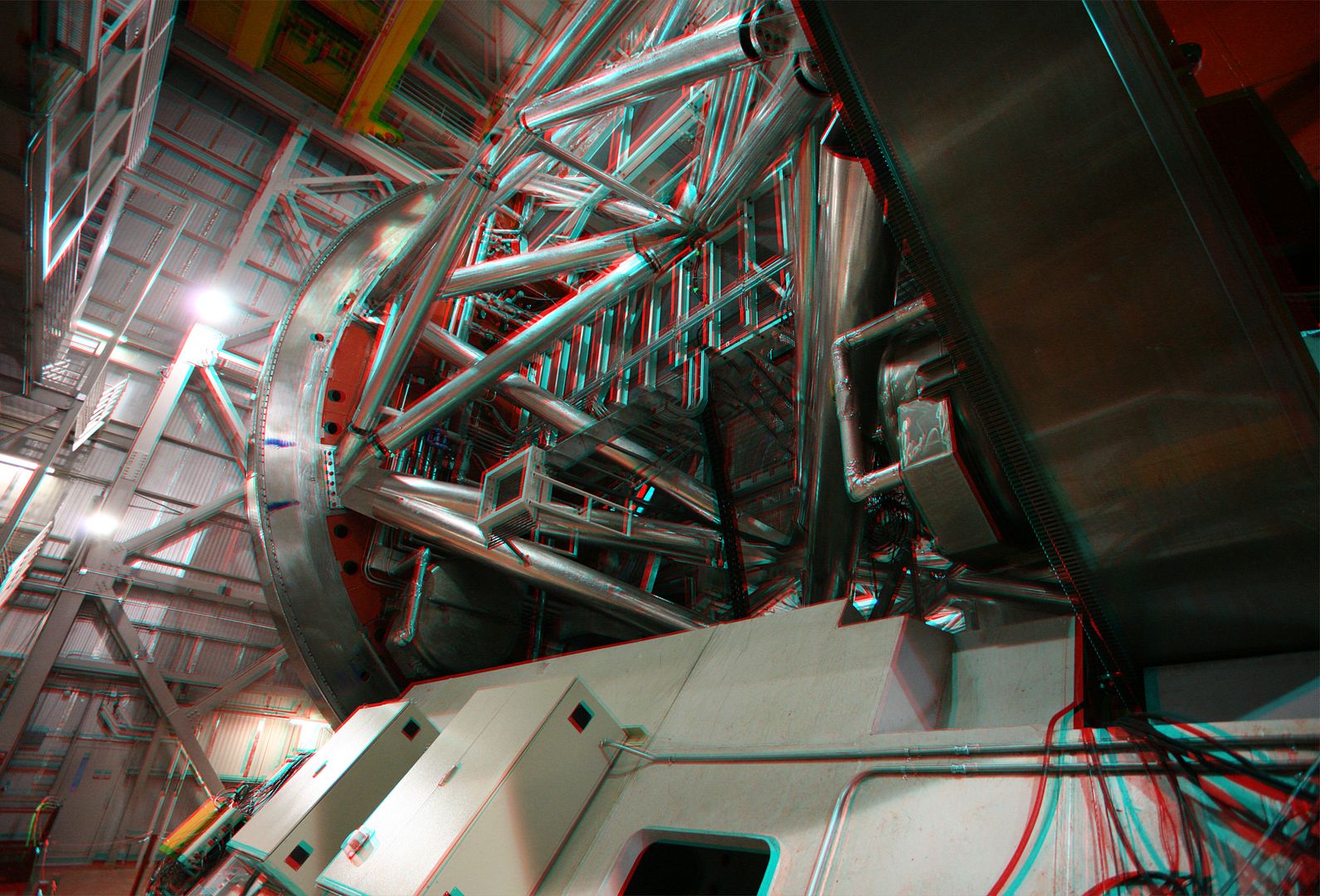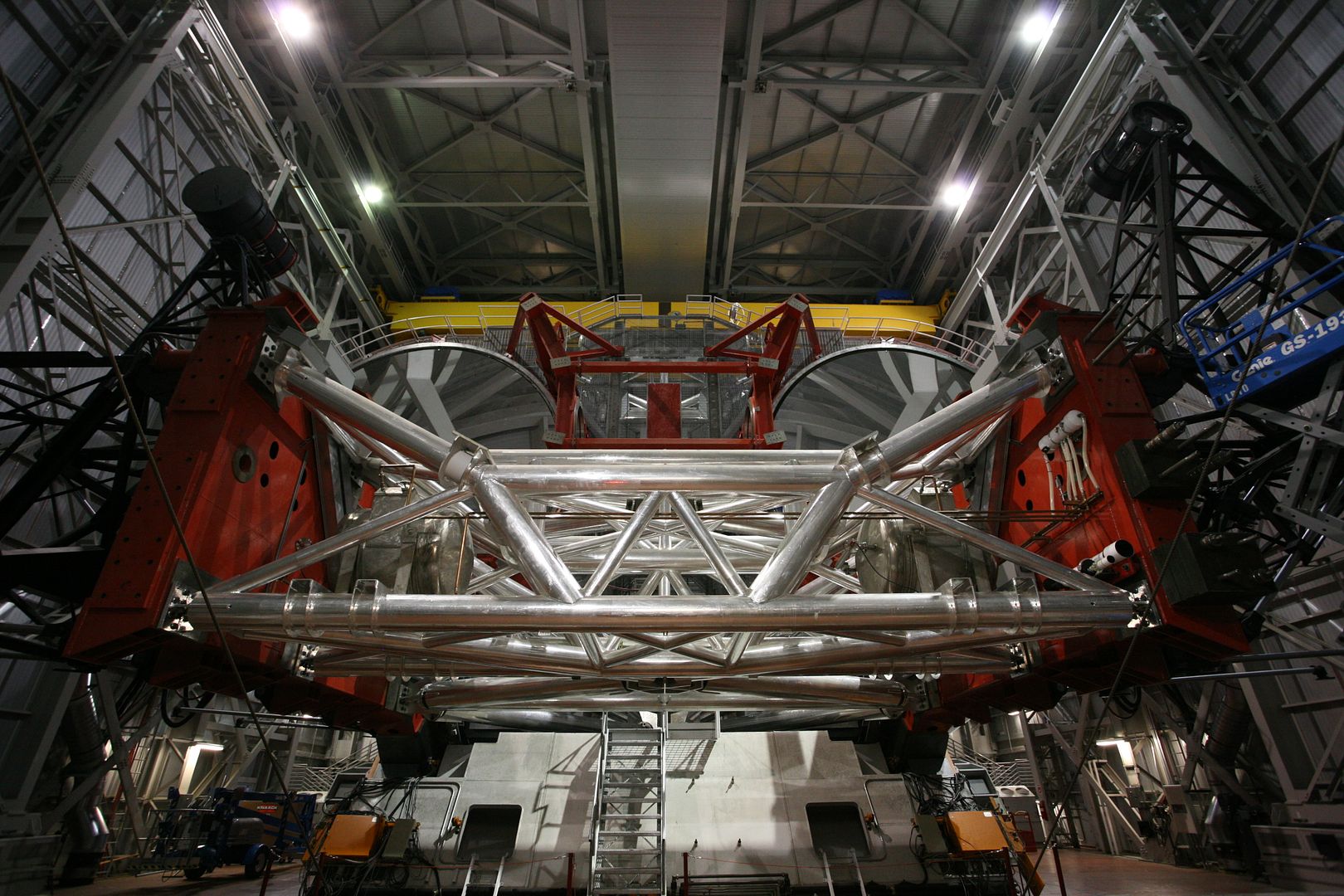In addition to the LBT, MGIO is home to the Vatican Observatory's Advanced Technology Telescope. It sports a 1.8-meter mirror that was spuncast at the University of Arizona's Steward Observatory Mirror Lab.
The Observatory is also home to the University of Arizona's Heinrich Hertz Submillimeter Telescope. Submillimeter astronomy looks at wavelengths of light that are invisible to human eyes. This portion of the spectrum longer in wavelength than visible light, but shorter than radio or even microwaves (no, not the ovens).
The LBT's "dome" bears some resemblance to the structure that houses the MMT Observatory (they're both rectangular in shape), but it really is quite unique.
The whole upper portion (the part that isn't green) turns with the telescope and has tubes that stick out that look almost like the big guns you might find on a battleship. They are part of the air handling system that helps keep the interior atmosphere at nighttime temperature.
Of course the really unique stuff is on the inside. The telescope has two 8.4-meter mirrors on one altitude-azimuth mount. This gives it the optical collecting area equivalent to an 11.8-meter telescope and theoretically the resolving power of a 22.8-meter telescope. In other words it is big. You might even say gigantic (Yes, there even bigger scopes coming in the future, but this really is huge.) It was big enough that I wished I had had a wider angle lens with me.
During my visit the telescope was tipped all the way down so as to be pointed at the horizon. We came in from behind and walked around its left side. The circular red area with the silver struts attached to it is the cell that holds the left-hand primary mirror. The red area at right (with all the holes in it) is one of the telescope's two semicircular bearings that move the telescope in altitude. When they want to move in azimuth the telescope is brought along for the ride as the whole upper part of the building is rotated.
Stepping in a little further, looking at the telescope almost from the side, gives a much better view of the telescope's bearing. The mirror in it's cell is top center and you can see a secondary mirror to the left (there's a red cable hanging down that almost blocks the view).
Here's a better view of one of the secondary mirrors. It is 0.91 meters (36 inches) across.
Looking up at the left-hand primary mirror you can see the depth of its curvature. The mirror is 35.2 inches thick at the edge and just 17.2 at the center hole. The primary mirrors are "fast" with an f/ratio of 1.142. They were also made at the University of Arizona's Steward Observatory Mirror Lab.
Here's nearly face on shot of the left side primary mirror. That's a tertiary mirror in front of it.
Here's the whole telescope as seen from the front. Both primary mirrors are visible. There's a silver support structure that runs across bridging the two sides. Look at the lower right side of that where it meets the red part. Do you see the little white tube there?
That's a small Meade refracting telescope that was used (and maybe still is) to verify where the main telescope is pointing.
This is me (left) standing with LBTO Instrument Support Astronomer Dave Thompson under the telescope's other primary mirror. Dave kind enough to give us the tour of LBT. I first met Dave when he was observing at Palomar as a Caltech postdoc.
Every so often one of the telescope's primary mirrors need to get a new reflective coating of aluminum. When this happens the mirror remains in place on the telescope and the the giant re-aluminumizing chamber is brought to it. Here's what the aluminumizing chamber looks like. It is stored down on the ground floor when not in use.
Rounding to the back of the telescope here's a view showing the mirror cell for the right-hand mirror (upper right) and the telescope's two bearings for moving it in altitude.
If you want to keep up with everything related to the LBT, be sure to check out the It's happening at LBT blog. There's great stuff there that you wont find on the official website. The color quality isn't the best, but you might want to check out the webcam from the VATT pointed at LBT.
I took a number of stereo pairs while I was there that I converted into red-blue anaglyphs. If you've got the red-blue glasses the next three photos should give you 3-D views of the telescope. I hope you enjoy them.
 |
| LBT in 3D, from the front |
 |
| LBT in 3D from the front but off center |
 |
| LBT in 3D the back end of the telescope |














I've heard a lot of times about Mount Graham's Large Binocular Telescope in 3D but did not see any picture of its but finally by the assist of your post I've come to know about it. Its my real pleasure that I've stopped by here and come to know the real things. Thanks
ReplyDelete